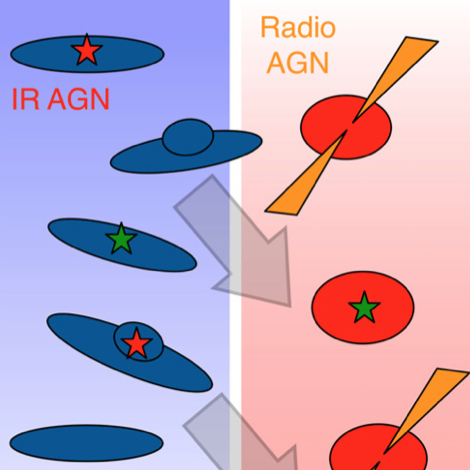Deep Silicate Absorption features in Compton-thick AGN arising due to host-galaxy dust
Goulding, Alexander, Bauer, Forman, Hickox, Jones, Mullaney, Trichas, 2012, ApJ, 755, 5
In this paper, we explore the origin of mid-infrared
(mid-IR) dust extinction in all 20 nearby (z = 0.05) bona-fide
Compton-thick AGN with hard energy X-ray spectral
measurements. In nearby optical and radio-selected AGN, a weak
correlation between gas column density (N_H) and silicate (Si)
absorption strength has been previously observed from Spitzer
mid-IR spectroscopy. In turn, this suggests that selection of
sources with strong Si-absorption is a good method to find the
most heavily obscured AGN, i.e., Compton-thick sources. We
used archival low-resolution (R~57-127) Spitzer Infrared
Spectrograph (IRS) spectroscopy to accurately measure the
silicate absorption features at lambda ~ 9.7um in the 20
nearby Compton-thick, and show that only a minority (~45%) of
Compton-thick AGN have strong Si-absorption features (S_9.7 =
ln(f_int/f_obs) = 0.5) which would indicate significant dust
attenuation. The majority (~60%) are star-formation dominated
(AGN:SB=0.5) at mid-IR wavelengths and lack the spectral
signatures of AGN activity at optical wavelengths, most likely
because the AGN emission-lines are optically-extinguished.
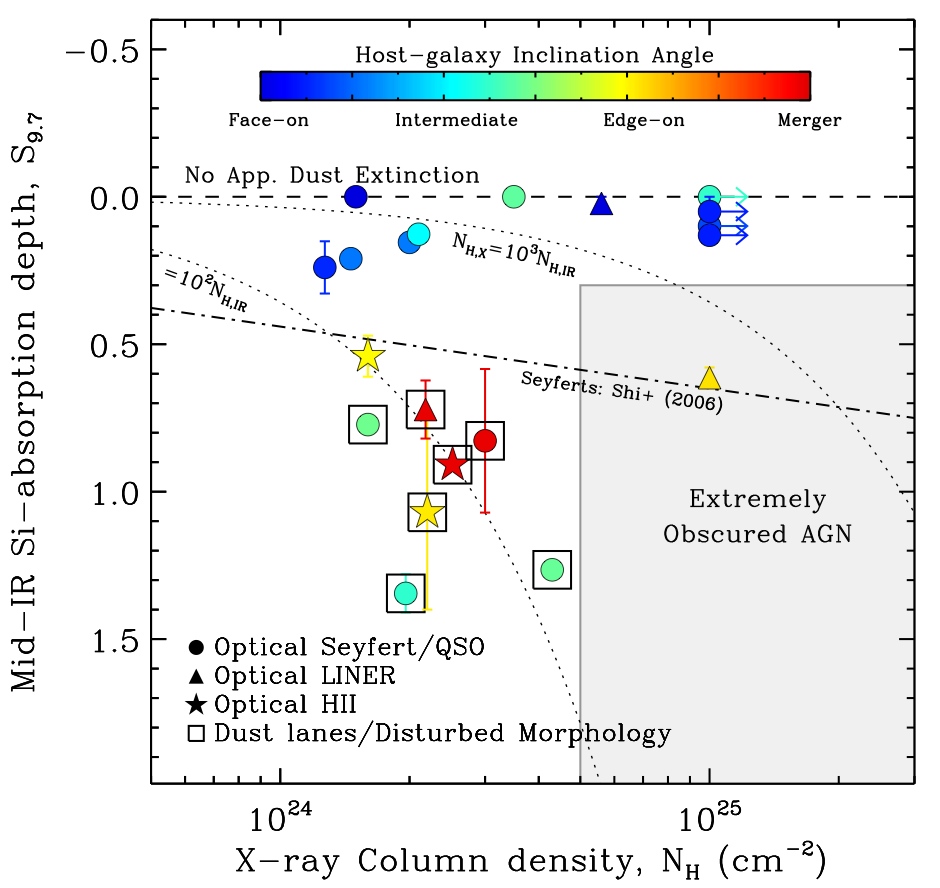
We find that the most heavily attenuated sources (S_9.7 =
0.5) appear to be hosted in galaxies with visible
dust-lanes, disturbed morphologies and/or galaxies which are
highly-inclined along the line-of-sight. By contrast, we
show that Compton-thick AGN hosted in low-inclination angle
(face-on) galaxies present only weak dust extinction
features (S_9.7~0-0.3). A similarly narrow-range in
Si-absorption is predicted by those theoretical torus models
which invoke clumpy distributions for the obscuring
material. However, on the basis of the IR spectra and
additional lines of evidence, we conclude that due to the
apparent lack of a correlation between gas and dust
attenuation in Compton-thick AGN, we suggest that the gas
and dust may not be co-spatial. Indeed, we find that the
dominant contribution to the observed mid-IR dust extinction
is dust located in the host galaxy (i.e., due to disturbed
morphologies; dust-lanes; galaxy inclination angles) and not
necessarily a compact obscuring torus surrounding the
central engine.
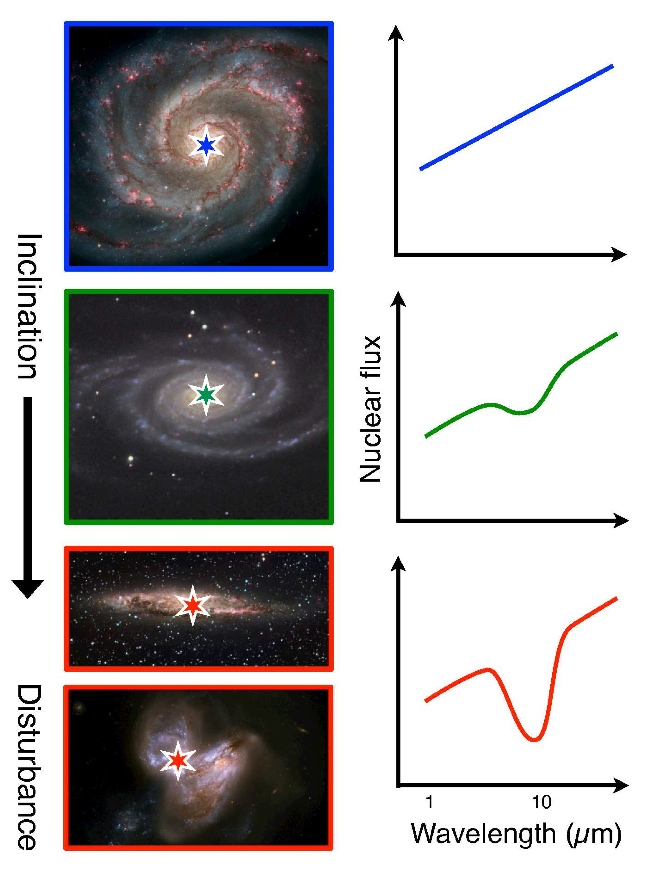
Census of AGN Activity I:
Optically-elusive AGN
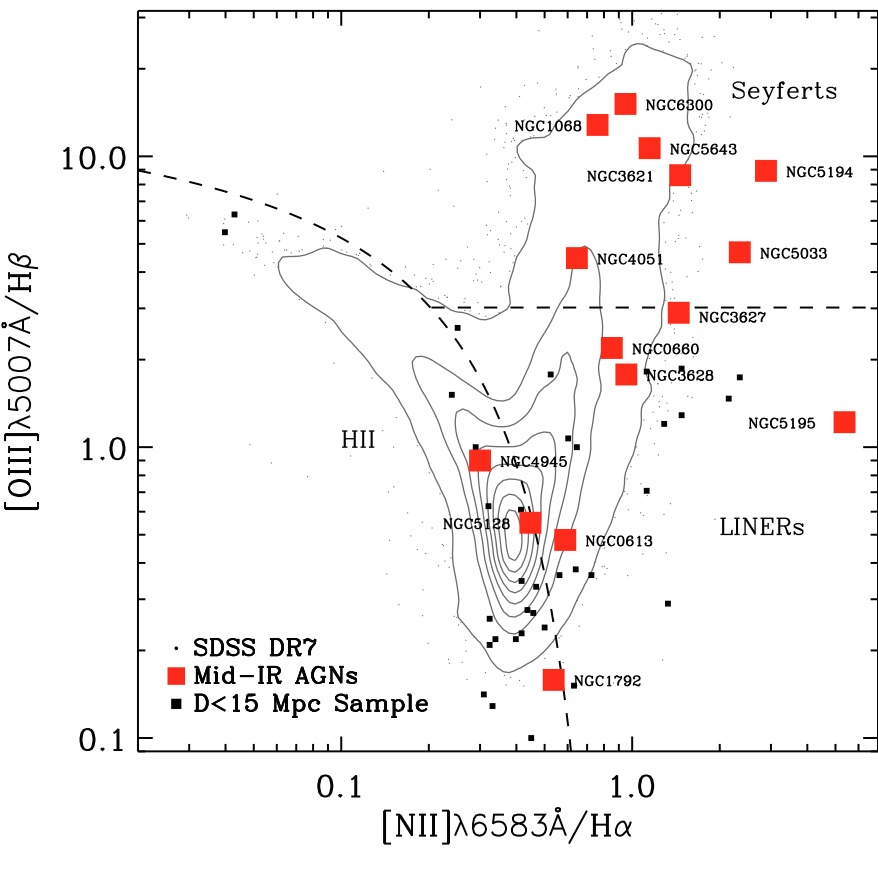
Census of AGN Activity II:
Growth of nearby Black Holes
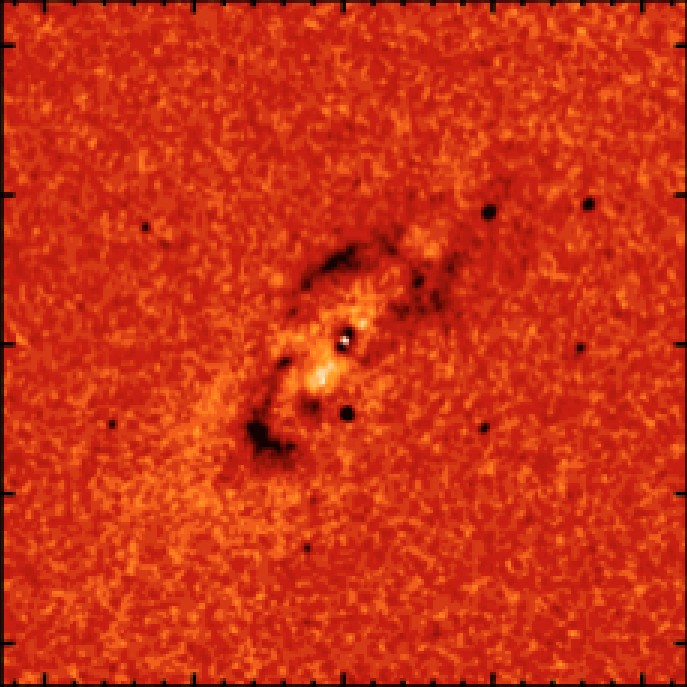
Mid-IR Compton-thick AGN:
AGN space density at z=0.1
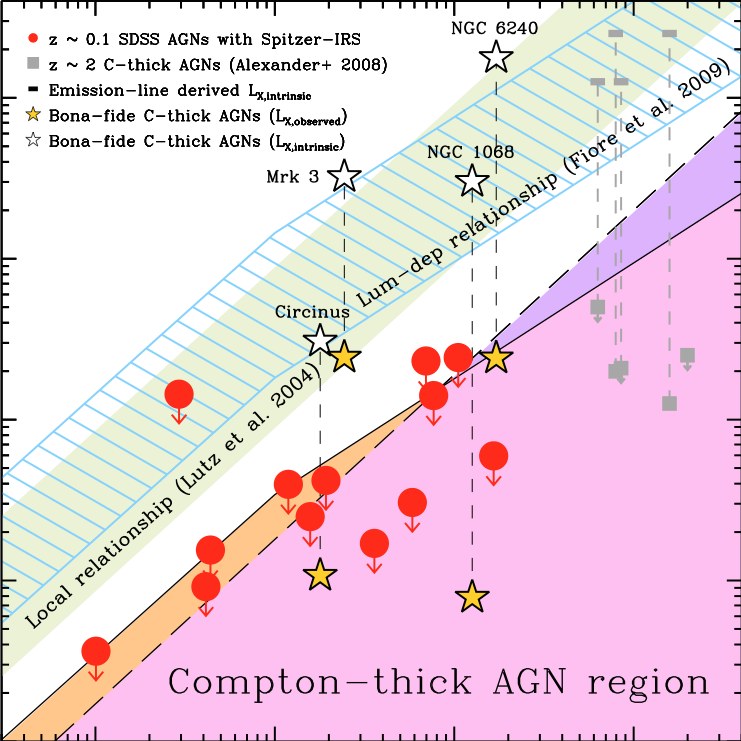
X-DEEP2:
X-ray sources in the DEEP2 fields
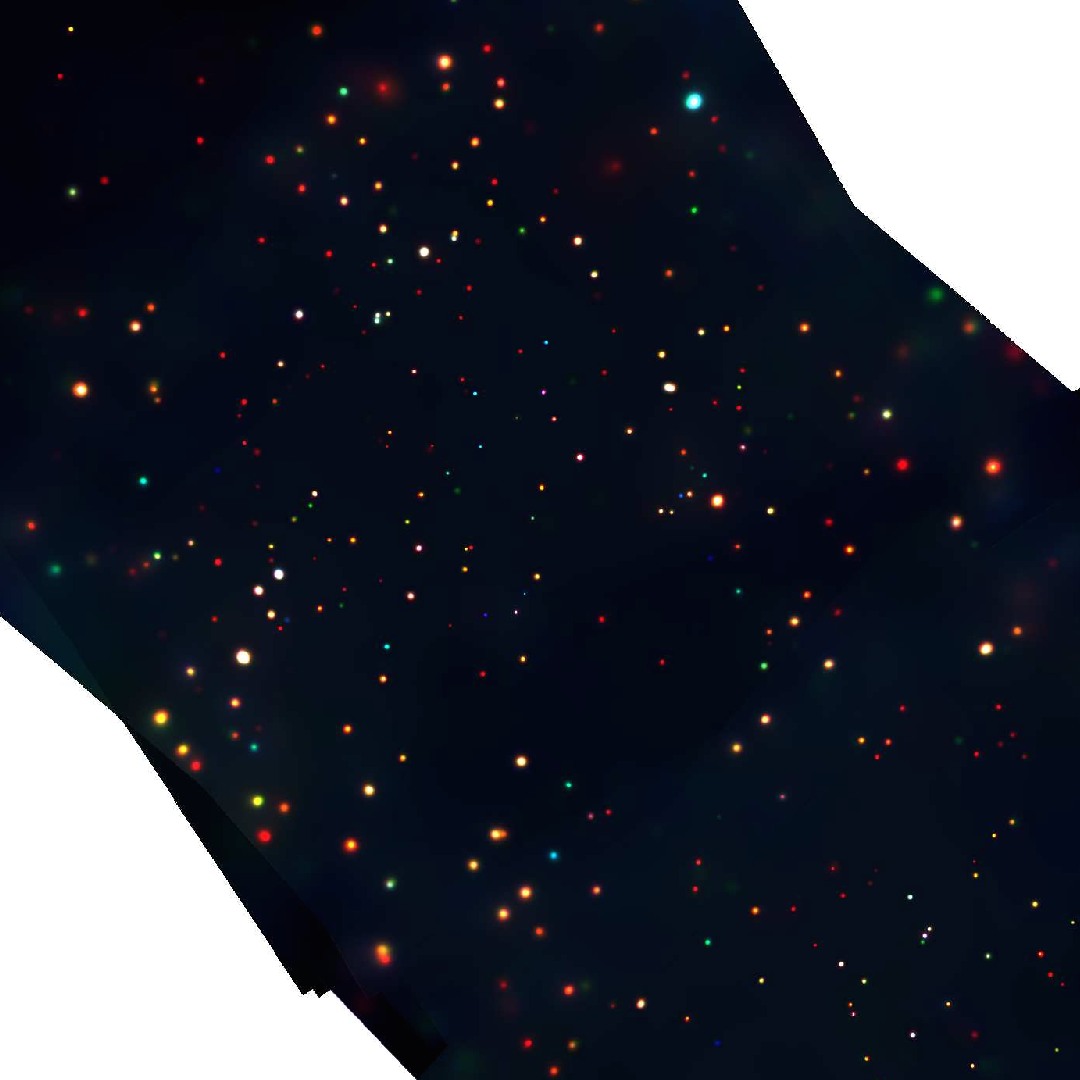
Si-absorption in CTAGN:
Host galaxy extinction
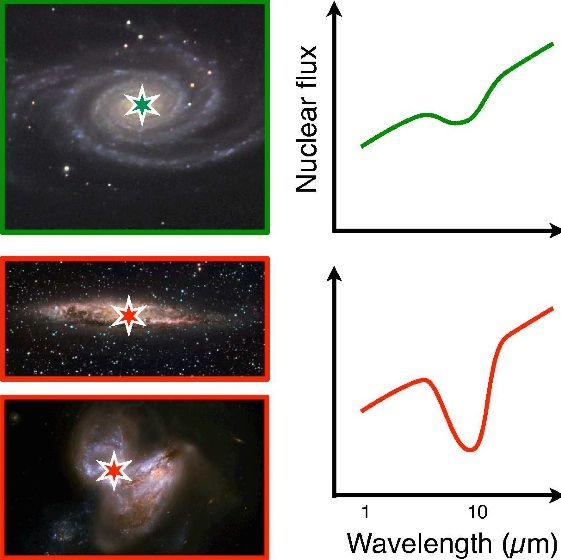
AGN-Galaxy Connection:
Evolution of AGN host galaxies
